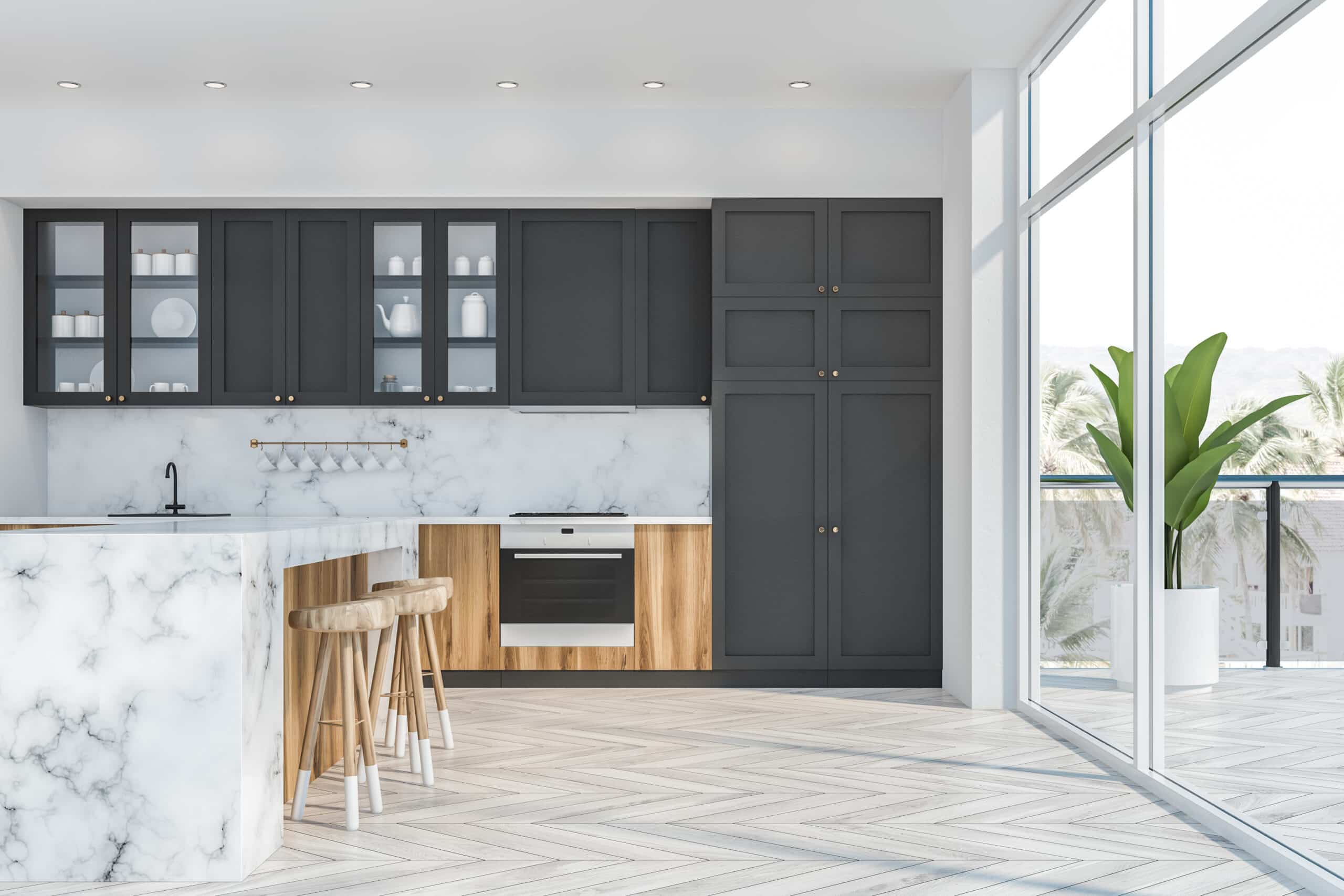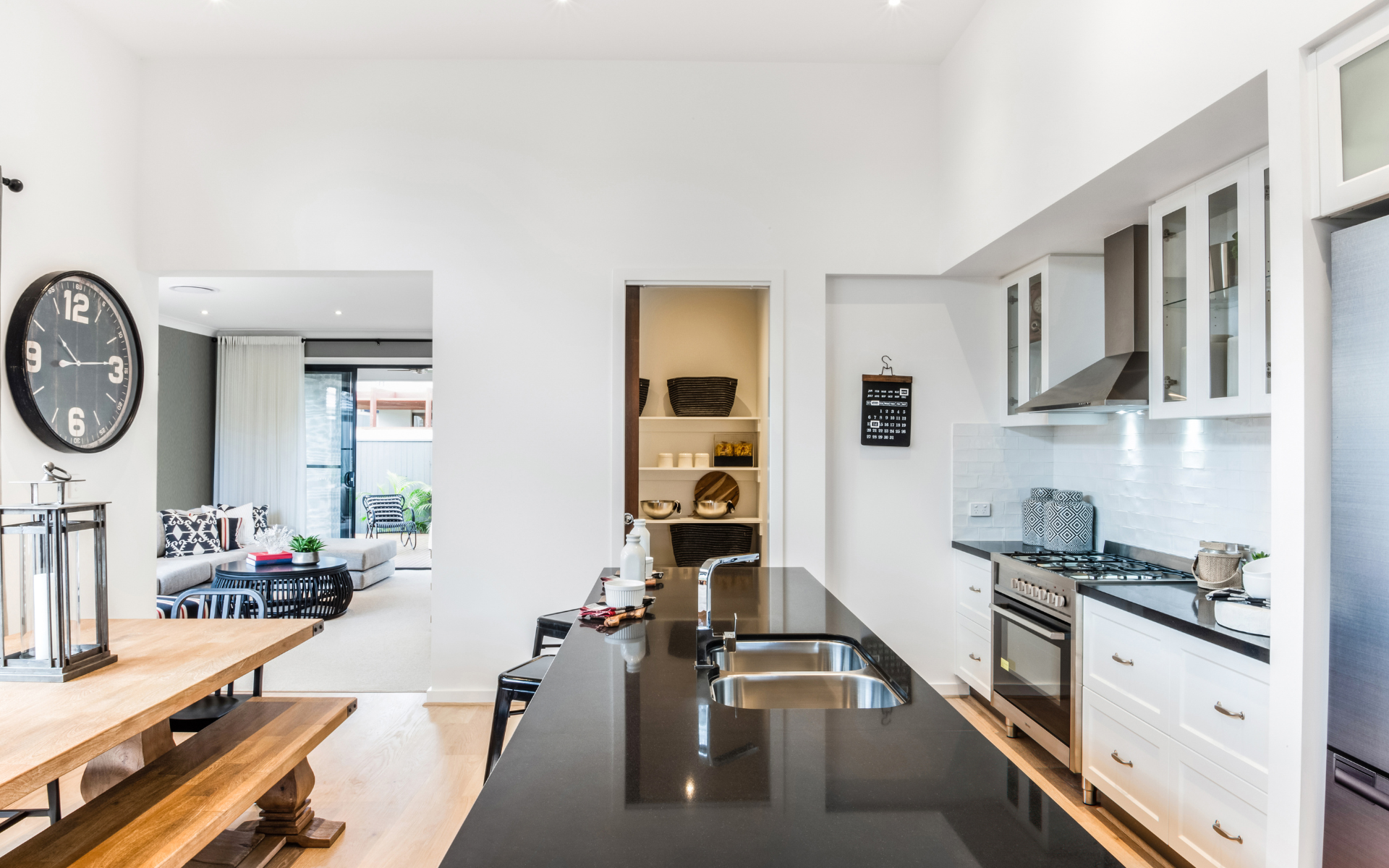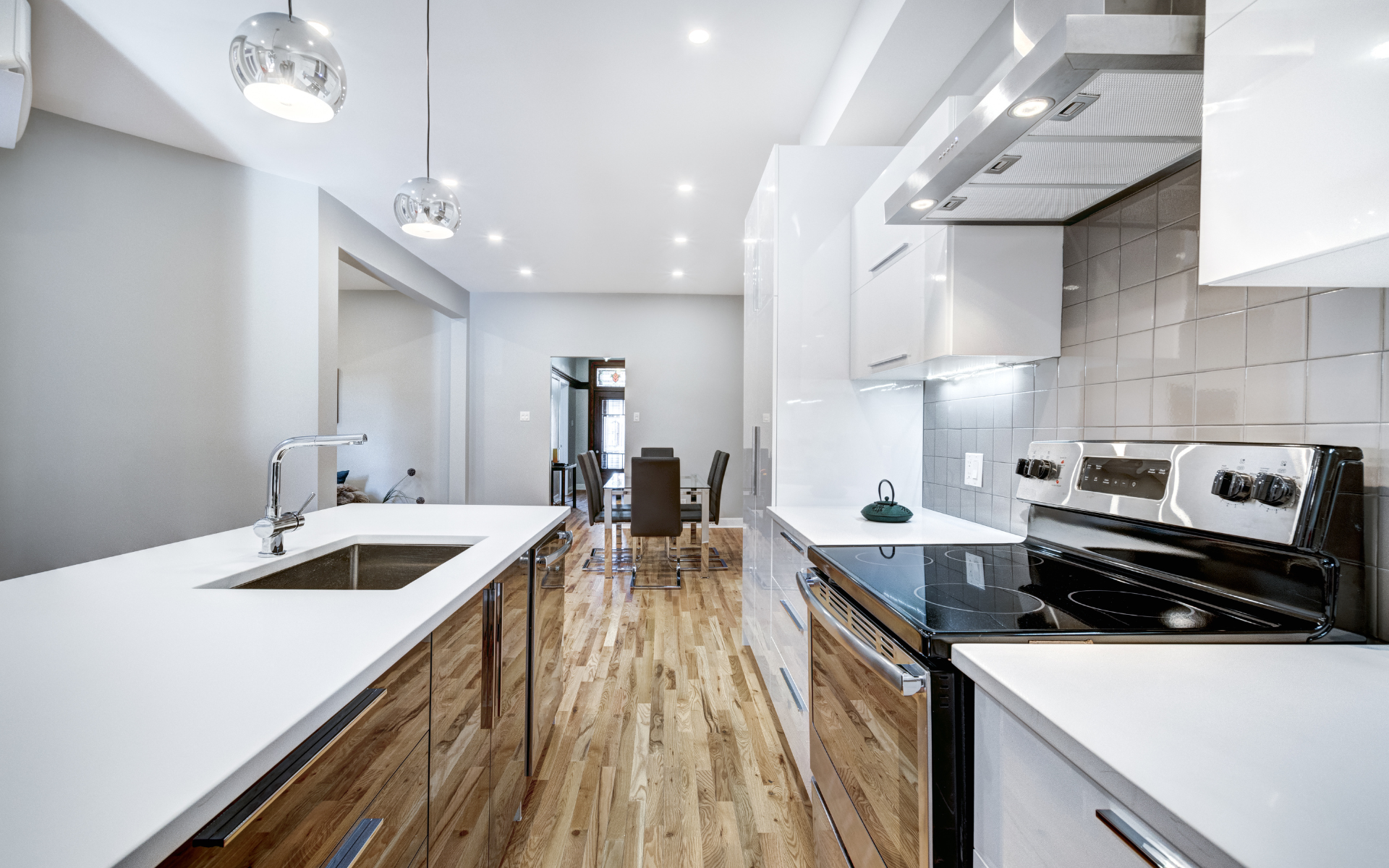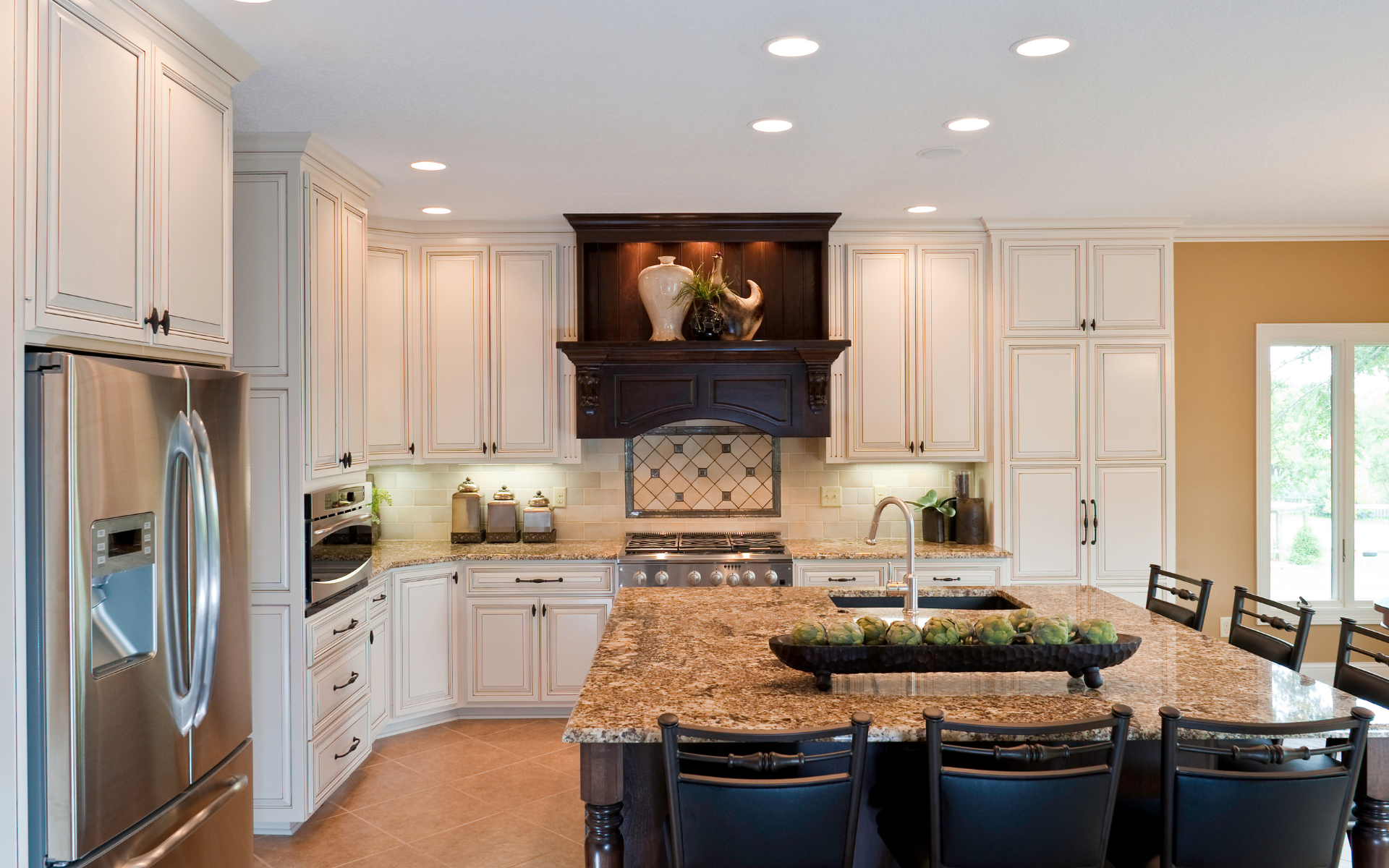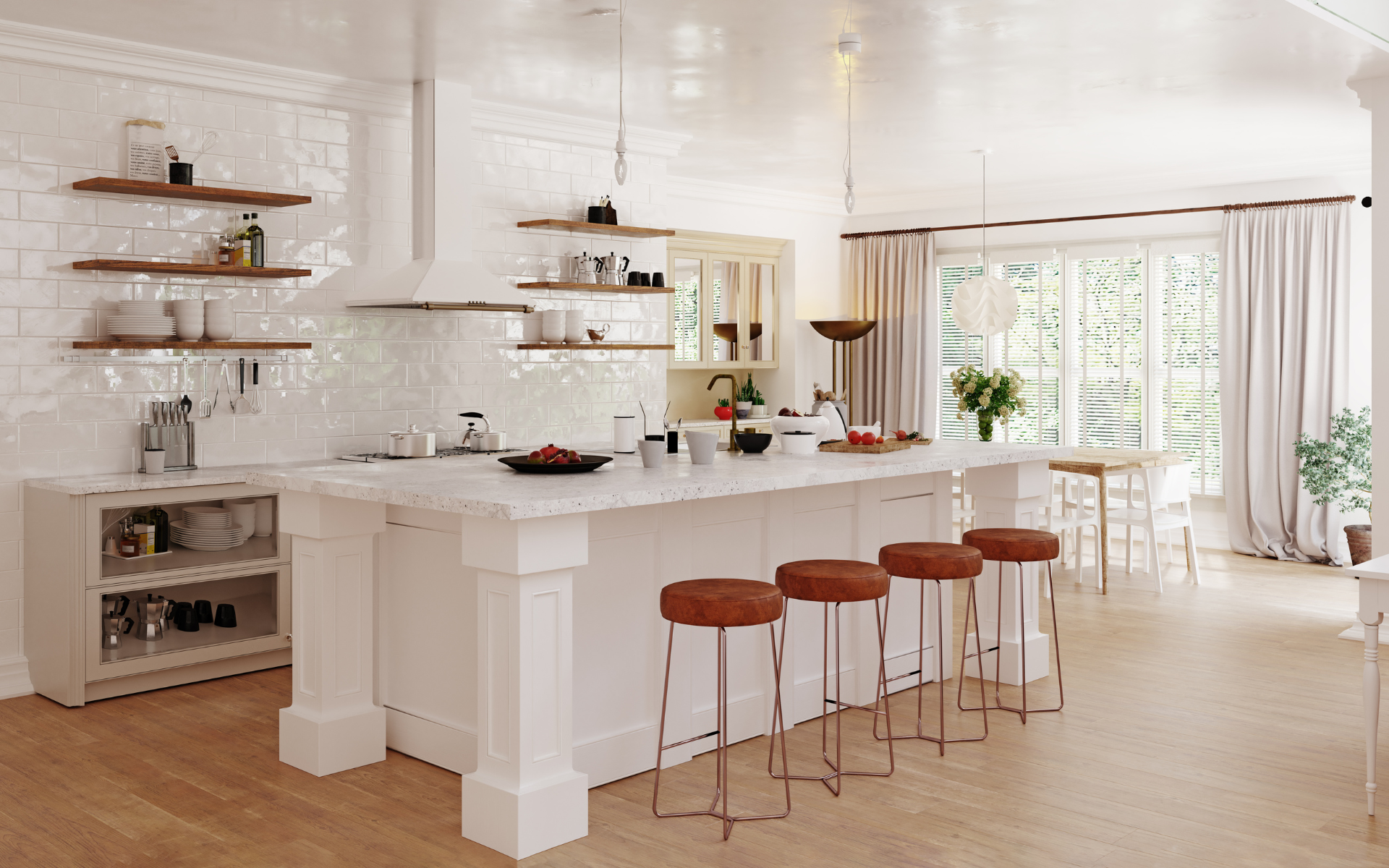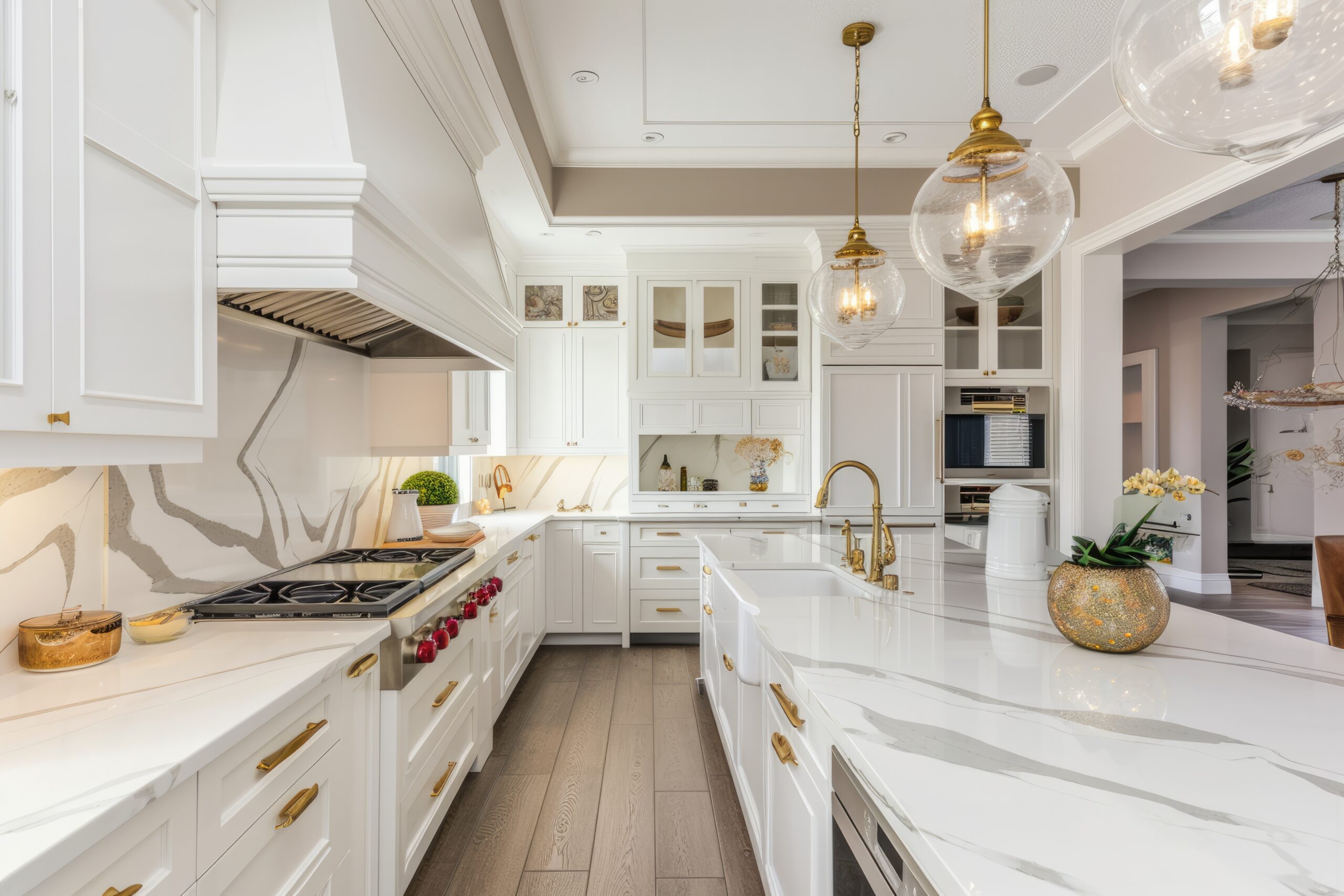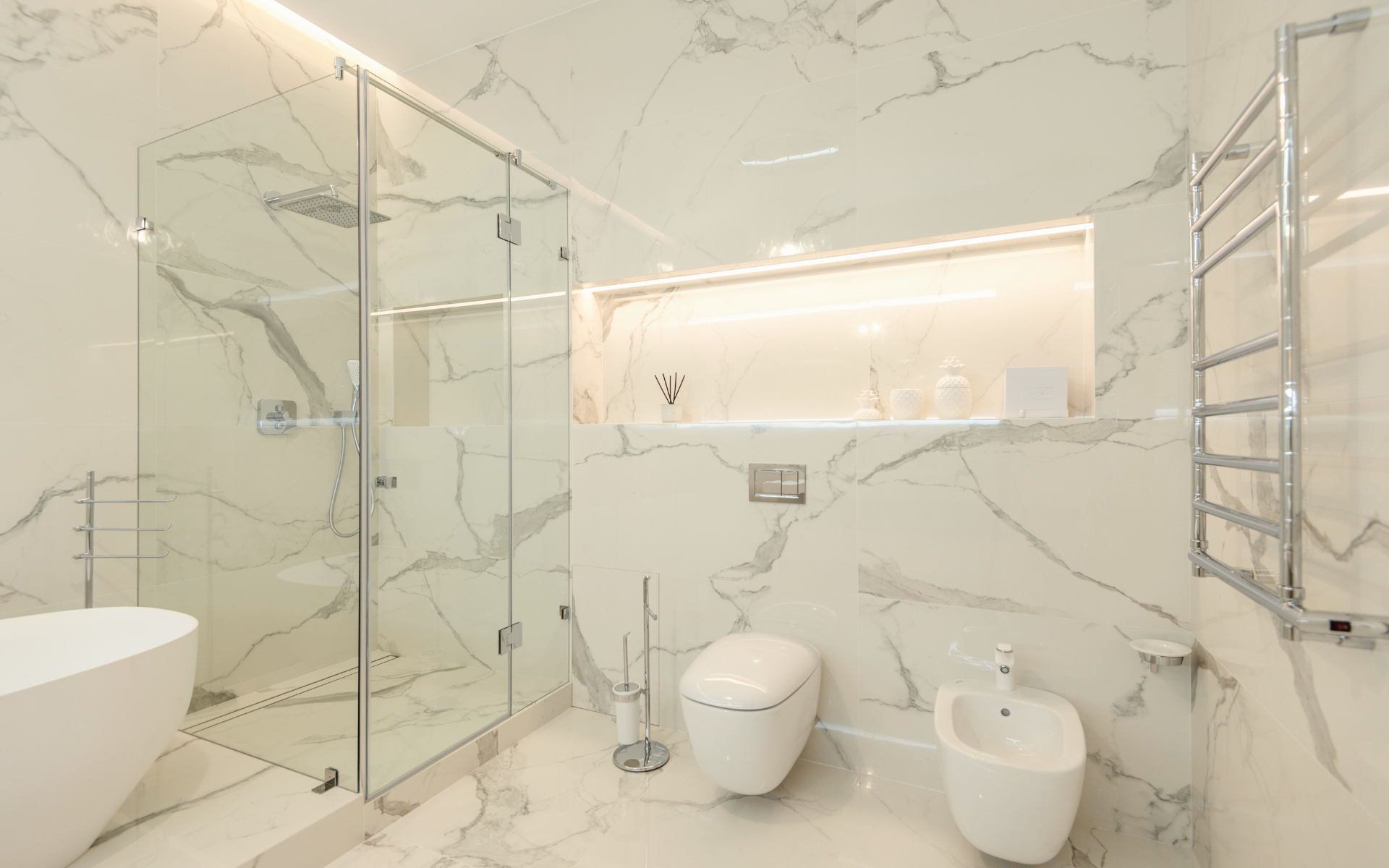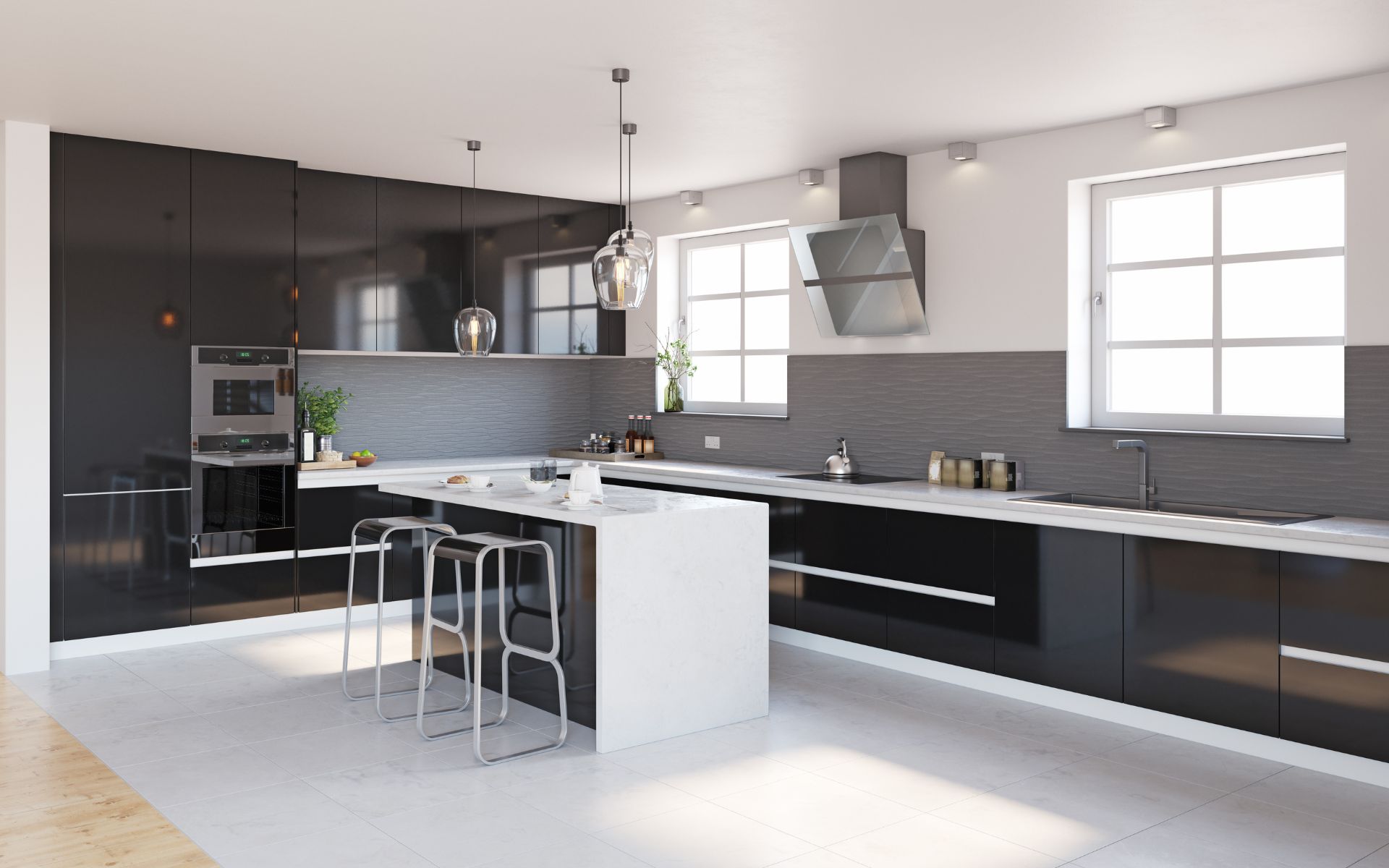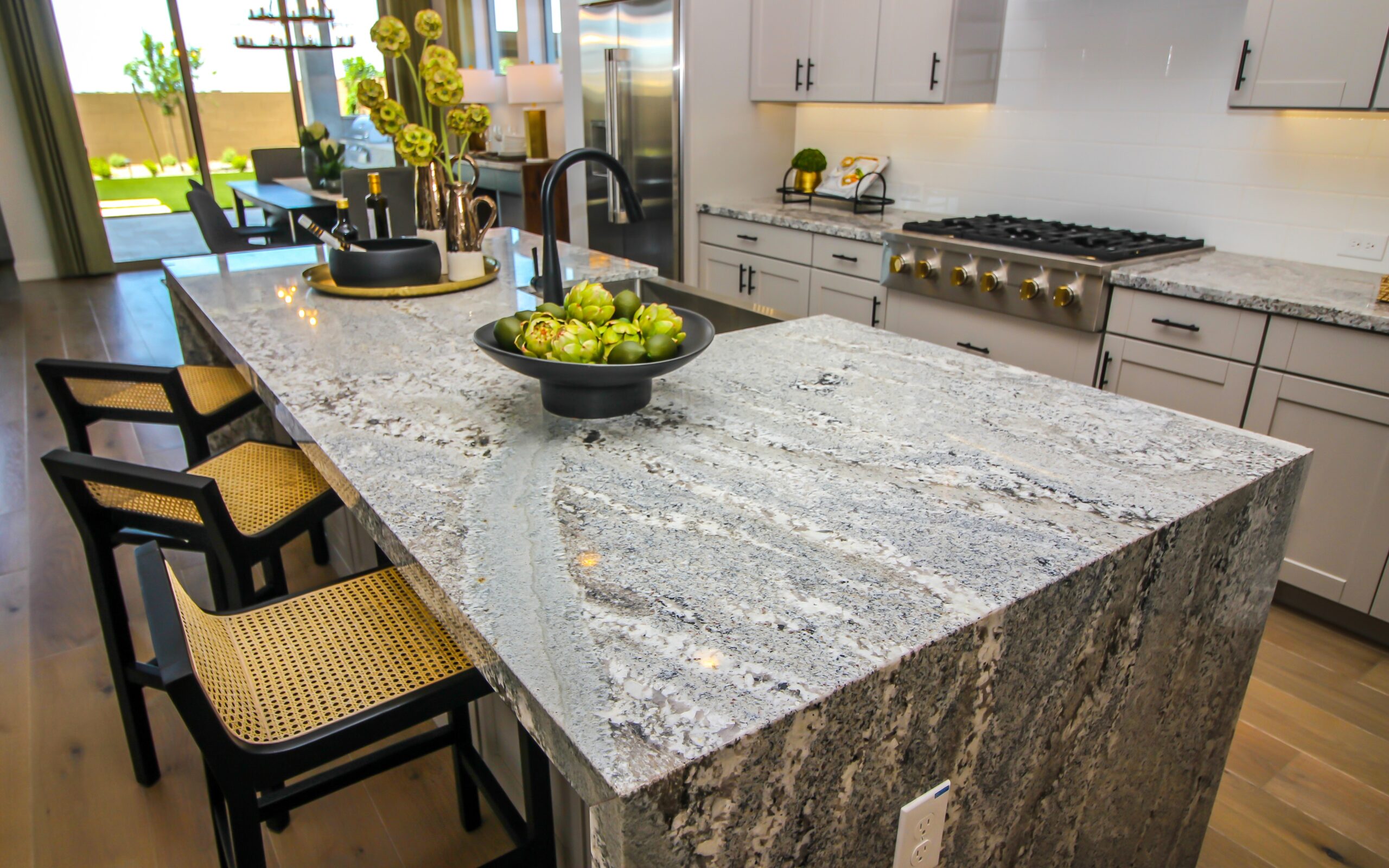Renovating or remodeling your kitchen and bath can completely transform your home. But how do you decide whether a remodel or full renovation is the right choice? This guide breaks down the key differences between kitchen remodels and renovations to help you determine the best approach for your needs and budget.
Introduction
Updating your kitchen can make a huge difference in your home’s appeal, functionality, and value. But kitchen projects range dramatically in scope and cost. On one end, simple, cosmetic changes, like painting the cabinets or replacing appliances qualify as remodels. At the far end, extensive gut renovations entail taking the kitchen down to the studs and rebuilding from scratch.
So how do you decide what’s right for your home? The choice between remodeling and full-scale renovation depends on factors like kitchen remodeling costs, the kitchen’s current layout and condition, how long you plan to stay in the home, and your goals for the home project. This article examines the differences between the two approaches. We’ll also provide tips to help you determine whether to remodel your existing kitchen or undertake a complete renovation.
Key Differences Between Kitchen Remodels and Renovations
Remodeling projects
A kitchen remodel focuses on surface-level upgrades within the existing footprint. Typical renovation projects include:
Typical kitchen remodeling include:
- Painting or refacing cabinets to give them a fresh, updated look. This is one of the most affordable and DIY-friendly remodeling options.
- Installing new countertops like quartz, granite, butcher block, or laminate. Countertops make a big impact for a relatively reasonable cost.
- Upgrading kitchen appliances like the refrigerator, stove, oven, dishwasher, and microwave. New appliances can completely transform the kitchen’s functionality.
- Adding an island or peninsula to expand the kitchen’s workspace and storage. Islands can also provide additional seating.
- Installing new flooring like tile, vinyl, or hardwood. Floors take a lot of wear, so new flooring freshens up the look.
- Adding new backsplashes made of tile, glass, or stone behind sinks and stoves. Backsplashes protect the wall and provide visual appeal.
- Improving lighting with new overhead fixtures, pendants, and under-cabinet lighting. Good lighting makes the kitchen more usable and attractive.
- Replacing old sinks and faucets with new models that feature trendy finishes and functionality. These swaps are relatively simple and high-impact.
Overall, remodeling focuses on surface enhancements rather than major layouts or structural changes. The goal is to refresh the look and upgrade amenities without intensive demolition or reconstruction. Carefully chosen updates can make a kitchen look and feel brand new.
Renovation projects
Kitchen renovations take a much more extensive, whole-room approach. A full renovation typically involves:
- Complete teardown of old cabinetry, surfaces, and layout
- Reworking the floorplan and layout
- Relocating plumbing and electrical
- Installing all new cabinetry, countertops, lighting, sinks, etc.
- Upgrading wiring, ventilation, and other infrastructure as needed
- Repairing or replacing subfloors, walls, and ceilings
- Potentially expanding the footprint by removing walls
Converting an attached garage into a guest bedroom or additional living space can be a great way to gain square footage during a kitchen renovation. However, removing the garage door and converting the garage into a room addition will require extensive structural changes and building permits.
In a full renovation project, you strip the kitchen down to the bones and reimagine the whole space. Many renovations offer a complete transformation which involves changing the look, feel, and workflow. However, the scope is more invasive, disruptive, and expensive.
Factors to Consider
Several factors come into play when deciding between remodeling and full-scale renovations. Consider the following:
Budget
Cost is often the biggest difference. According to the 2021 Cost vs Value Report, the average midrange minor kitchen remodel cost about $26,214. The average major remodel came in at $66,196. And upscale renovations cost over $131,510 on average.
You can also save significantly by doing DIY-friendly remodels like painting versus more complex renovations. Estimate realistically before deciding on the scope.
Kitchen renovations typically have a higher ROI than bathroom remodels if you plan to sell your home shortly.
Condition of Existing Kitchen
Assessing your kitchen’s current state is also key. Does the layout work well but surfaces and fixtures just need refreshing? Then remodeling may suffice. But if the layout feels outdated, upgrades will be constrained without more invasive changes.
Take a hard look at factors like:
- Workflow efficiency
- Storage adequacy
- Appliance functionality
- Overall aesthetic
- Structural/mechanical issues
If these aspects need serious help, remodeling alone probably won’t cut it.
Long-Term Plans
How long do you plan to stay in the home? Kitchen projects offer one of the top returns on investment for homeowners. But you’re more likely to recoup renovation costs if you stay put longer.
If you may sell soon, simpler upgrades make sense. But if you plan to enjoy the new kitchen for years, a full renovation and remodel could be worth the upfront investment.
Goals
Identify your main goals upfront. Do you just want to replace worn surfaces and fixtures? Does only solution the layout need tweaking to be more functional? Or does the whole space feel woefully outdated and require a full transformation?
Your objectives will steer the decision toward a full renovation vs a simple refresh or an expansive re-imagining. Prioritize what matters most, from a budget perspective and for your enjoyment.
Remodeling Project Ideas
If you decide remodeling your existing kitchen makes the most sense, here are some popular DIY projects to consider:
- Paint or refinish cabinets: Just painting rotted wood cabinets white or a trendy color can give the kitchen a whole new look for little material cost.
- Update hardware: Replace outdated handles and knobs with modern brushed nickel or matte black fixtures.
- Install new countertops: Swap dated laminate for stylish quartz or butcher block countertops to refresh the look.
- Upgrade lighting: Overhead light fixtures and under-cabinet lights brighten up the space and provide task lighting.
- Add a backsplash: Tile or glass backsplashes protect the wall behind sinks and stoves while adding visual interest.
- Replace appliances: Swapping out old appliances for new efficient models can completely transform the kitchen’s functionality.
Focus on changes that provide maximum bang for your buck. Most remodels can make the space look and feel brand new.
Full Kitchen Home Renovation Project
For more extensive transformations, a full-on renovation or remodel project may be in order. Here are some key components of an expansive kitchen overhaul:
- Layout changes: Knocking down walls and reworking the whole footprint to improve flow and functionality.
- New cabinetry: Installing fresh modern cabinets makes a huge impact. Consider options like white shaker-style cabinets.
- Island addition: Islands can expand seating and add prep space. But they often require moving plumbing and electrical.
- High-end surfaces: Granite or marble countertops and tile backsplashes elevate the whole aesthetic.
- Luxury fixtures: Invest in pro-grade appliances, sinks, kitchen faucets, and fittings.
- Improved ventilation: Upgrade exhaust hoods and ventilation to keep the living space comfortable.
- Added built-ins: Integrate bookshelves, glass-front cabinets, or wine racks for expanded storage.
- New floors: Replace worn floors with materials like hardwood, tile, or high-end vinyl plank.
Full restoration projects allow you to re-imagine the kitchen completely and implement an ideal layout and high-end finishes.
Conclusion
The main difference between remodeling and renovating a kitchen is that remodeling focuses on surface upgrades like appliances and countertops, for example, while renovating involves structural changes to the layout and footprint. Renovation worth is typically the cost due to the high ROI (return on investment or ROI) compared to other home improvement projects.
Remodeling and renovating a kitchen are both major undertakings. But a remodel preserves what’s working in the existing layout while refreshing surfaces and fixtures. It limits demolition and doesn’t involve significant structural or system changes. A home improvement project takes a whole-room approach to transform the footprint, look, and amenities of the whole house.
For major structural changes, it’s important to work with an experienced contractor to ensure the project is completed safely and meets building codes. Analyze the existing state, determine your priorities, and consult a kitchen design professional to pursue the approach that fits your home best. With strategic upgrades suited to your needs, you can enjoy the kitchen of your dreams.

